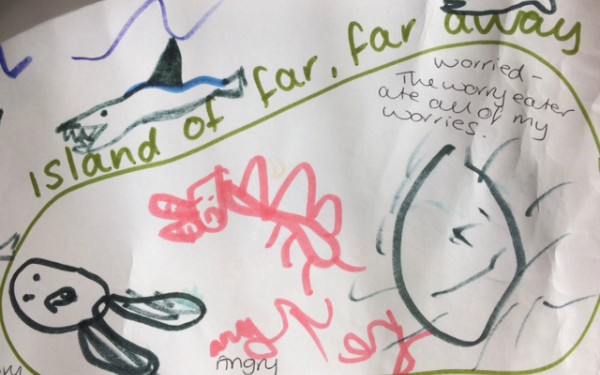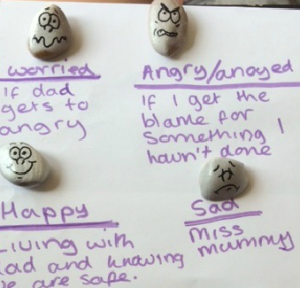
By Chantal Treanor, Lauren Thompson, Miriam Williams and Sarah Hatton, family support and protection, children and families services, West Sussex
It’s probably fair to assume that most social workers recognise that understanding the child’s voice and lived experience is central to our work. But social work can be relentlessly busy and in reality we do not always have the time or head space to come up with ideas about how to engage children.
Book your place at the Community Care skills workshop on Tuesday 9th October in London
Chantal, Lauren, Miriam and Sarah will be running a session sharing how the tools described in this article and others in their toolkit have improved their work with children. Other sessions on the day will cover:
- Beyond ‘wishes and feelings’: trauma-informed and research-informed practice
- Ascertaining and evidencing the views wishes, feelings and experiences of disabled children
- Direct work with adolescents and understanding behaviour
Find the full programme, details of sessions and book a place here.
On top of that, not everybody feels confident in working with children; what struck one of us when we first started the ASYE was how many people go into social work but don’t necessarily know how to speak to children; have you ever heard, for example, somebody speak to a four-year-old child as if they are in a business meeting?
There is nothing particularly special about the four of us; we are practising social workers with the usual qualifications and training. What we do share is an enthusiasm and passion for engaging the children we work with.
We are not afraid to make a fool of ourselves and give activities a go – and then share stories of when things have gone well, and when it’s been a total fail.
You’d be forgiven for thinking we all have lots of small children running around at home based on the cars full of toys, games, and activities we drive around in. In fact, not all of us have children of our own, but we are dedicated to exploring how we can improve how we communicate with children and our direct work.
What actually counts as ‘direct work’?
Something that we recognised as an issue in our team was that there was no shared expertise of what we should be doing with children in direct work; nobody really sat down and talked about what they found the most helpful. Its importance is emphasised a lot, but did we all agree what actually counts as ‘direct work’?
Last year, as a group we sat down and created a direct work toolkit to share with our team. We are fortunate that our service values this work we do and provides one of these toolkits to every social worker joining the team; it includes things like worksheets, activities to explore feelings and worries, games, worry-eaters, pens and pencils and play dough.
 Everybody now has a shared set of tools and resources. Individually, workers build on this with their own toys and games, but this team toolkit has provided a baseline set of resources and across the team, workers now have a shared language and understanding about direct work. This helps social workers who feel less creative or confident about engaging children.
Everybody now has a shared set of tools and resources. Individually, workers build on this with their own toys and games, but this team toolkit has provided a baseline set of resources and across the team, workers now have a shared language and understanding about direct work. This helps social workers who feel less creative or confident about engaging children.
‘Free’ play is just as important
We feel strongly that direct work is not just for special occasions. Planned direct work is really important, but so is ‘free’ play – especially when beginning your relationship with a child and getting to know them. Planned work can sometimes be scary, especially because the children we work with are often told that they can’t or shouldn’t talk to social workers. Lots of our toys are geared towards helping children to open up, but we also carry round a whole multiplicity of things because we simply like playing with them. Not everything needs to have a ‘higher purpose’; sometimes the purpose is just that they are fun.
Endings and beginnings
One of the things that we thought a lot about is supporting positive beginnings and endings for children. As part of the direct work toolkit, we created a booklet about having a social worker called ‘My Social Worker and Me’; this provides a safe framework to be able to explore with children what has happened in their lives to lead to them having a social worker, what having a social worker means, how we are working to keep them safe, and to help them understand what might happen next. Although we play and it can be fun, we are working with our children for a reason which is often scary or frightening for them, and they deserve to know what’s going on.
Endings in the lives of the children we work with are not always positive, and social work as a profession does not always help this with high caseloads and frequent turnover of staff.
We cannot necessarily control changes in worker, but we can make sure that our own ending with that child is as positive as possible.
The ‘My Social Worker and Me’ book prepares children for endings right from the beginning.
We also consider how familiar tools can be used in supporting positive endings for children. West Sussex uses Signs of Safety; we have shared ways of using the Words and Pictures tool to explain changes in children’s lives to them.
Making sense of emotions
Beginnings and endings provide a framework for working with children, but in between we need to be able to explore children’s emotions and help them with these. A cheap and fun activity we have used for this is making sand jars; we’ve used these to help children who had been removed from their mother’s care to think about how things were when they used to live with her, and to help them think through their feelings about the big changes in their lives.
Although we’re focused on direct work with children, in reality there are times when it’s useful to use some of the tools and activities with parents. So we’ve also used sand jars to help a mother who had recently lost her baby explore and process some of that grief, and positively end her relationship with social care despite the sad circumstances.

Anonymised example of ‘Whose Job’ work
Often our direct work has supported our safeguarding role. We’ve used the toolkit as part of our evidence in court proceedings; for example, with one child we used drawing, talking and the ‘Worry-Eater’ to talk about her worries. We captured how she was impacted by her mother’s poor mental health, and were able to use this in court to evidence the emotional harm she had experienced. We used our ‘Whose Job’ activity to explore the role of different people in the child’s life; this work helped us to identify that the child felt that nobody in her family could keep her safe, and that it was only the social workers who did this
These are some examples of the way that we have used direct work with children; we are looking forward to sharing some more examples of tools and resources and examples of how this direct work impacts the children we are working with at the Community Care skills workshop on 9th October 2018.


 Family help: one local authority’s experience of the model
Family help: one local authority’s experience of the model  ‘I spent the first three months listening’: how supportive leadership can transform children’s services
‘I spent the first three months listening’: how supportive leadership can transform children’s services  How senior leaders in one authority maintain a culture of excellence
How senior leaders in one authority maintain a culture of excellence  How staff support ensures fantastic outcomes for children and families
How staff support ensures fantastic outcomes for children and families  Workforce Insights – showcasing a selection of the sector’s top recruiters
Workforce Insights – showcasing a selection of the sector’s top recruiters 

 Facebook
Facebook X
X LinkedIn
LinkedIn Instagram
Instagram
Comments are closed.